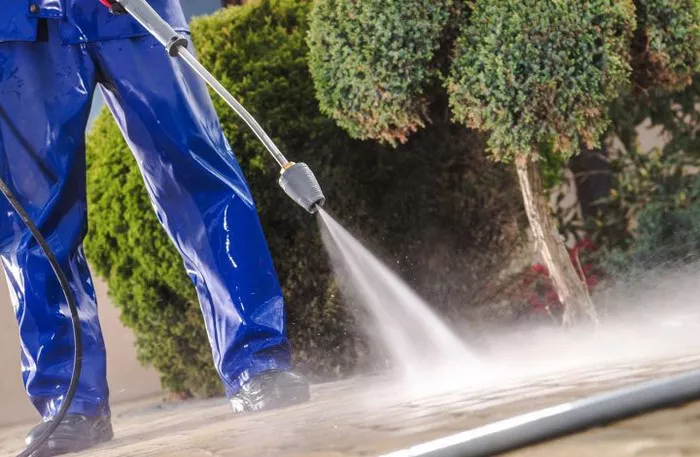With the acceleration of urbanization, the increasing traffic volume on roads has led to growing concerns about cost control for power washing lanes, an important means of urban road cleaning. Power washing lanes not only enhance road cleanliness and reduce dust pollution but also prolong the lifespan of road surfaces, contributing to urban environmental protection. Therefore, effective cost control for power washing lanes has become a focus of attention for many enterprises and government departments. This article will provide you with a comprehensive professional guide to the cost of power washing lanes to help you better understand and control these costs.
Analysis of the Cost Structure of Power Washing Lanes
Equipment Investment Cost
The equipment required for power washing lanes includes high-pressure water guns, cleaning machines, vacuum cleaners, etc. The purchase cost of these equipment is relatively high, especially for high-end equipment, which may cost tens of thousands or even more. The performance and quality of the equipment directly affect the cleaning effect and work efficiency, so it is necessary to consider cost-effectiveness when selecting equipment.
Labor Costs
Operating power washing lanes requires professional drivers and cleaners. Drivers are responsible for operating the cleaning vehicles to ensure the safety and efficiency of the cleaning process, while cleaners are responsible for using high-pressure water guns and other tools for surface cleaning. Labor costs vary depending on the number of cleaning vehicles, the skill level of operators, and the duration of work. Generally, skilled operators can improve cleaning efficiency, thus reducing labor costs.
Material Consumption Costs
During the process of power washing lanes, some materials such as cleaning agents, lubricants, etc., may be required. The consumption of these materials depends on factors such as the operating time of the cleaning vehicle, the area being cleaned, and the frequency of use. Although material costs account for a relatively small proportion, they are still a significant factor affecting total costs.
Maintenance Costs
The equipment for power washing lanes needs regular maintenance to ensure normal operation and extend its lifespan. Maintenance costs include regular replacement of worn parts, cleaning equipment surfaces, checking circuit systems, etc. These costs vary depending on the brand, model of the equipment, and the frequency of maintenance. Generally, regular maintenance can reduce equipment failure rates and reduce repair costs.
Other Potential Costs
In addition to the above aspects, power washing lanes may also involve some other potential costs, such as fuel costs, insurance costs, taxes, etc. Fuel costs depend on the operating mileage of the cleaning vehicle and fuel prices; insurance costs are paid to ensure the safety of equipment and personnel; taxes are paid according to the regulations of national and local governments. Although these costs account for a relatively small proportion, they are still a significant factor affecting total costs.
Factors Influencing the Cost of Power Washing Lanes
Market Demand
Market demand is one of the key factors influencing the cost of power washing lanes. If the market demand is strong, enterprises can reduce unit costs by improving cleaning efficiency and reducing labor costs; conversely, if market demand is insufficient, enterprises may need to bear more fixed costs, leading to an increase in unit costs.
Equipment Performance
The performance of equipment directly affects the cleaning effect and work efficiency. High-performance equipment can improve cleaning efficiency, reduce labor costs, and thus reduce unit costs. Conversely, poor performance equipment may result in unsatisfactory cleaning effects, requiring more labor and time to complete tasks, thereby increasing unit costs.
Operator Skills
The skill level of operators also affects the cost of power washing lanes. Skilled operators can improve cleaning efficiency and reduce labor costs; conversely, inexperienced operators may result in unsatisfactory cleaning effects, requiring more time and labor to complete tasks, thereby increasing unit costs.
Policies and Regulations
Policies and regulations also have a certain impact on the cost of power washing lanes. For example, an increase in environmental protection requirements by the government may lead to an increase in the cost of cleaning agents; regulation of the labor market may result in an increase in labor costs. Therefore, enterprises need to fully consider changes in policies and regulations when formulating cost control strategies.
Conclusion and Outlook
Power washing lanes, as an important means of urban road cleaning, are of great significance for cost control for enterprises and government departments. By deeply understanding the cost structure and influencing factors of power washing lanes and adopting corresponding cost control strategies, costs can be effectively reduced and economic benefits can be enhanced. In the future, with the continuous progress of technology and changes in market demand, cost control for power washing lanes will face new opportunities and challenges. Enterprises and government departments need to continuously innovate and improve cost control methods to adapt to the new market environment and achieve sustainable development.

